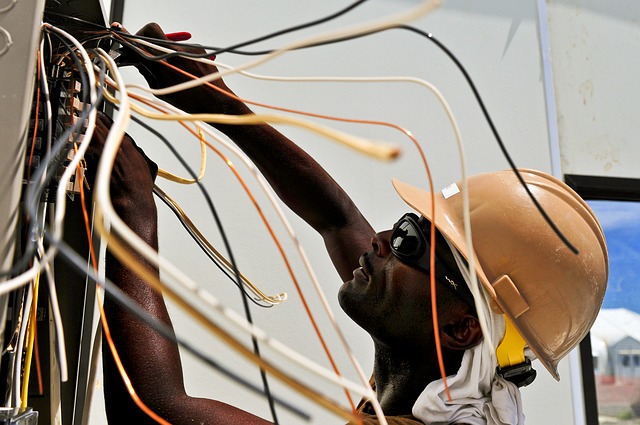Tailored BRE Electrical Solutions for Homes and Companies
Tailored BRE Electrical Solutions for Homes and Companies
Blog Article
The Ultimate Guide to Electric Installment: Tips and Methods for a Safe and Efficient Home Wiring System
In the realm of home maintenance, couple of elements are as critical yet often overlooked as the electrical wiring system. By exploring the nuances of electrical safety procedures and energy-saving techniques, this comprehensive overview will certainly lose light on the intricacies of home wiring, empowering individuals to take charge of their home's electrical infrastructure.
Understanding Electrical Precaution
To make certain the safety and security of both people and building, understanding and implementing correct electric safety and security measures is vital in any kind of home circuitry task. Electrical power is an effective force that can be dangerous if not handled with care. Among the basic security procedures is making sure that all electrical work is executed by certified professionals that follow neighborhood building ordinance and regulations. It is vital to perform a thorough examination of the electrical system prior to starting any kind of wiring task to identify possible risks or concerns that need to be dealt with.
Moreover, using the ideal devices and equipment is vital for preserving safety throughout electrical installations. Protected gloves, voltage testers, and protective eyeglasses are several of the basic security equipment that should be put on to stop electric shocks or accidents. It is also vital to de-energize circuits before servicing them and to identify all circuits and breakers plainly to stay clear of complication.

Essential Tools for Home Electrical Wiring
Ensuring the appropriate application of electrical safety procedures in home circuitry projects includes using a certain collection of important tools designed to help with the setup procedure properly and securely. Some of the trick devices needed for home wiring projects include a voltage tester for examining live cords, cable pole dancers for getting rid of insulation from cords, a wire cutter for exactly cutting cables to size, a screwdriver established for protecting electrical elements, electric tape for insulation and securing connections, a cord ripper for stripping cable sheathing, and a multimeter for gauging voltage, present, and resistance.
Step-by-Step Electrical Installation Overview
Beginning an electrical installation task needs meticulous preparation and adherence to safety and security guidelines. Prior to starting any type of work, guarantee you have a comprehensive plan describing the layout of the electric system, consisting of the placement of electrical outlets, buttons, and components. Consider the power demands of each tool to identify the ideal cable gauge and breaker dimensions.
The very first step in the installment procedure is to shut down the power supply to the location where you will be working. Utilize a voltage tester to validate that the circuits are de-energized before touching any type of cables. Next off, very carefully remove existing components or outlets and separate the cables.
When setting up brand-new electrical wiring, run cable televisions with walls and ceilings, protecting them in place with proper fittings. Comply with neighborhood building codes and supplier instructions for correct wire setup and links. BRE Services. See to it to identify cords for simple recognition and future maintenance

Troubleshooting Common Circuitry Issues
Having actually completed the setup process as described in the previous subtopic, repairing usual circuitry issues is a vital skill for guaranteeing the security and functionality of your electrical system. One common issue is a stumbled breaker, typically brought on by overloaded circuits or a brief circuit. To troubleshoot this, situate the breaker panel, recognize the tripped breaker by trying to find the one not totally in the "on" placement, and reset it by turning it totally to "off" and after that back to "on." One more common issue is a malfunctioning electrical outlet, identified by no power or periodic power supply. Ensure the electrical outlet is not controlled by a button, after that utilize a voltage tester to look for power. If there is no power, shut off the circuit, evaluate the electrical wiring connections for any type of loose or broken cords, and replace the electrical outlet if essential. Continuously flickering lights can indicate loose circuitry connections or an overloaded circuit. To address this, check and you can try these out tighten all wire links in the affected components and switches and redistribute the lots on the circuit to balance the electric demand. Frequently inspecting and without delay attending to these usual electrical wiring issues will certainly maintain the safety and security and effectiveness of your home electrical system.
Tips for Energy-Efficient Electric Equipments
For ideal energy performance in electric systems, executing clever techniques and using energy-saving technologies is extremely important. One essential tip for achieving an energy-efficient electric system is to update to LED lighting. Appropriate insulation and sealing of windows, doors, and electric outlets can additionally protect against energy loss, eventually decreasing the workload on electric systems.
Verdict
Finally, carrying out correct precaution, making use of important tools, adhering to a detailed setup overview, repairing typical issues, and integrating energy-efficient pointers are critical for a secure and reliable home wiring system. By adhering to these methods, home owners can make certain the durability More Info and capability of their electric installations. It is essential to prioritize security and efficiency when it concerns electrical operate in order to stop prospective hazards and to preserve a dependable electrical system in the home.
Report this page